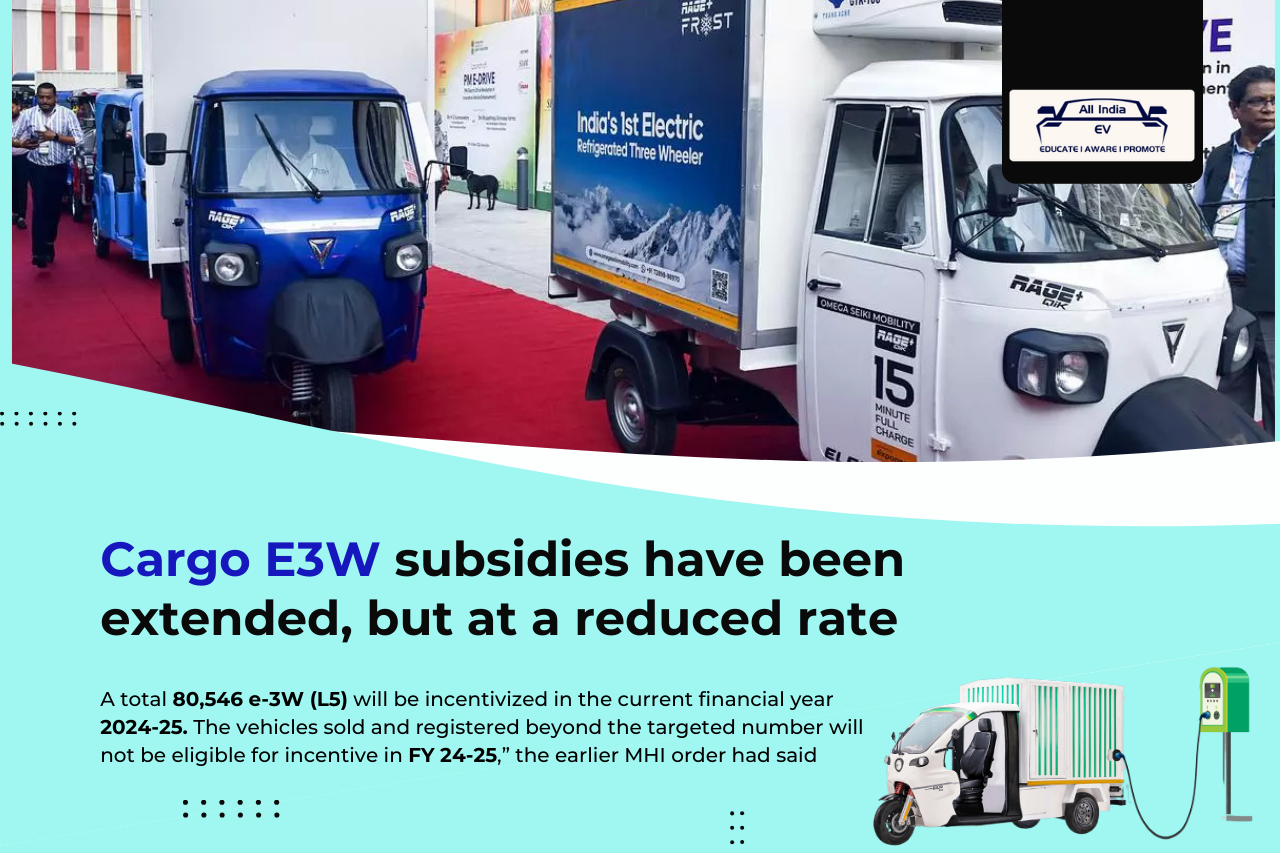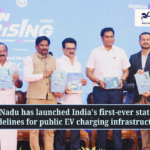
Government Reduces Subsidies for Electric Three-Wheelers Amid Surging Sales
The Indian government has announced a reduction in subsidies for electric three-wheeler cargo vehicles (e-3Ws) following the early achievement of sales targets under the PM E-DRIVE scheme. The subsidies, now capped at INR 25,000 per unit, were temporarily halted after the targets were met within weeks of the scheme’s launch. This move aims to balance the rapid growth in electric vehicle (EV) sales with sustainable financial incentives.
The PM E-DRIVE scheme, which succeeded the Faster Adoption and Manufacturing of Electric Vehicles (FAME) initiative, is designed to promote the sale of locally made electric vehicles. The reduction in subsidies is expected to impact the market dynamics, particularly for manufacturers and consumers who have benefited from the financial support. Despite the reduced subsidies, the government remains committed to promoting electric mobility and achieving its ambitious targets for decarbonizing the energy sector by 2030. This development highlights the challenges and opportunities in the evolving EV market in India, as stakeholders navigate the balance between rapid growth and sustainable support mechanisms.
Background and Rationale
The PM E-DRIVE scheme was launched to accelerate the adoption of electric vehicles in India, offering financial incentives to promote the sale of locally made units. The scheme aimed to subsidize the sale of 1.42 million electric two-wheelers (e-2Ws), 125,000 L5 electric three-wheelers (e-3Ws), and 67,000 e-rickshaws and e-carts during the financial year 2025-26. However, the rapid achievement of sales targets for e-3Ws prompted the government to reassess the subsidy structure.
The decision to reduce subsidies to INR 25,000 per unit, down from the original amount, reflects the need to balance financial incentives with sustainable growth. This move is intended to ensure that the subsidies reach a critical volume for manufacturers to sustain efforts in cost reduction and innovation. The government’s approach aims to create a more balanced and sustainable market environment, encouraging manufacturers to continue investing in the development of electric vehicles while managing the financial implications of the subsidy program.
Impact on Manufacturers and Market Dynamics
The reduction in subsidies is expected to have a significant impact on manufacturers and the overall market dynamics. For original equipment manufacturers (OEMs), the reduced financial support may pose challenges in maintaining competitive pricing and profitability. However, it also presents an opportunity for manufacturers to innovate and find cost-effective solutions to sustain growth. The market dynamics are likely to shift as manufacturers adjust their strategies to cope with the reduced subsidies.
This could lead to increased competition and a focus on enhancing the value proposition of electric three-wheelers. Additionally, the reduction in subsidies may influence consumer behavior, as the financial incentives have been a key driver of EV adoption. Manufacturers will need to focus on improving the affordability and performance of their vehicles to attract and retain customers in a more competitive market environment.
Benefits and Challenges for Consumers
The reduction in subsidies for electric three-wheelers presents both benefits and challenges for consumers. On one hand, the reduced financial support may increase the upfront cost of purchasing an electric three-wheeler, potentially deterring some consumers. However, the long-term benefits of electric vehicles, such as lower operating costs and reduced environmental impact, remain significant.
Consumers who are committed to sustainable transportation may still find electric three-wheelers to be a viable and attractive option. Additionally, the government’s continued support for electric mobility, despite the reduced subsidies, indicates a long-term commitment to promoting sustainable transportation solutions. Consumers can expect ongoing improvements in vehicle performance, charging infrastructure, and overall market offerings as manufacturers adapt to the evolving subsidy landscape. The key challenge for consumers will be navigating the initial cost barrier while recognizing the long-term benefits of electric vehicle ownership.









